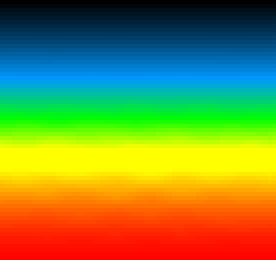
Chi arriva a Tecla, poco vede della città, dietro gli steccati di tavole, i ripari di tela di sacco, le impalcature, le armature metalliche, i ponti di legno sospesi a funi o sostenuti da cavalletti, le scale a pioli, i tralicci. Alla domanda: - Perché la costruzione di Tecla continua cosí a lungo? - gli abitanti senza smettere d'issare secchi, di calare fili a piombo, di muovere in su e in giú lunghi pennelli. - Perché non cominci la distruzione, - rispondono. E richiesti se temono che appena tolte le impalcature la città cominci a sgretolarsi e a andare in pezzi, soggiungono in fretta, sottovoce: - Non soltanto la città.
Se, insoddisfatto delle risposte, qualcuno applica l'occhio alla fessura d'una staccionata, vede gru che tirano altre gru, incastellature che rivestono altre incastellature, travi che puntellano altre travi. - Che senso ha il vostro costruire? - domanda. - Qual è il fine d'una città in costruzione se non una città? Dov'è il piano che seguite, il progetto?
- Te lo mostreremo appena termina la giornata; ora non possiamo interrompere, - rispondono.
Il lavoro cessa al tramonto. Scende la notte sul cantiere. È una notte stellata. - Ecco il progetto, - dicono.
I am a theorist working in the broad areas of "high energy astrophysics" (X- and gamma-ray astronomy), and "compact objects" (white dwarfs, neutron stars, and black holes). In particular, much of my research is focused on understanding the physics of accretion onto black holes, a process that is responsible for some of the most powerful and energetic phenomena in the universe, including quasars, some X-ray binaries, and gamma-ray bursts. A fairly recent technical review of some of the outstanding issues in the physics of black hole accretion can be found in my Les Houches lectures. I have also written a more popular level article on the physics of accretion in the October 2004 issue of Scientific American.
Because of angular momentum conservation, accretion onto black holes is generally
thought to take the form of a rotationally supported accretion disk. There are
two central problems in accretion disk theory:
The answer to the first question in the case of black hole accretion disks is thought
to be either magnetohydrodynamical turbulence which is present due to the
"magnetorotational instability" (MRI), or large scale torques exerted on the disk
by global, ordered magnetic field structures which extend to large distances. Some
combination of both of these processes might be occurring as well.
My group has recently been exploring the physics of the MRI and MRI turbulence in the innermost parts of accretion disks. Here radiation pressure is generally thought to dominate more ordinary gas pressure in providing vertical support of the disk against the tidal gravitational field of the black hole. This involves analytically understanding the linear growth of the MRI (see e.g. Blaes & Socrates 2001), as well as performing numerical radiation magnetohydrodynamical simulations of its nonlinear growth. The latter have been pursued by my former postdoc, Neal Turner. A key result of these studies is that the MRI can result in highly compressible turbulence with substantial density inhomogeneities, even though the turbulent motions are highly subsonic compared to the overall radiation sound speed. This is because rapid photon diffusion weakens the radiation pressure response to compressible motions. The same diffusion also dissipates the turbulence directly into heat, an effect first pointed out by my former student, Eric Agol, in work with Julian Krolik.

Another instability that is generic to magnetized, radiation pressure dominated environments is the "photon-bubble instability". In the limit of short wavelength perturbations, this instability can be viewed as resulting from magnetoacoustic waves which are amplified by a background radiation pressure gradient. The end result of this appears to be a series of magnetohydrodynamic sonic booms, as shown in the fluid density animation to the right (courtesy of Neal Turner). This instability would therefore exacerbate the inhomogeneities that are likely to be present in the accretion disk. For more information, see for example the papers by myself and my former student, Ari Socrates, particularly Blaes & Socrates (2003) and Socrates et al. (2005), as well as Turner et al. (2005).
Ultimately, the whole point of all this theoretical work is to explain (and predict!) observations. There have been long-standing problems with accretion disk models of sources containing black holes - see Koratkar & Blaes (1999) and Blaes (2004) for reviews of the problem in the context of active galactic nuclei and quasars. One of my group's major projects is to calculate more realistic accretion disk models, including the theoretical effects discussed above and also more sophisticated treatments of opacities and radiative transfer. My student, Shane Davis is taking the lead on doing this in the context of X-ray binaries. See in particular Davis et al. (2004).